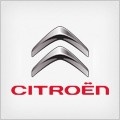
CITROEN Traction
Generations Timeline, Specs and Pictures
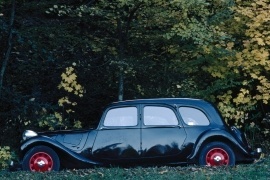
The quintessential French classic the Traction Avant is also regarded as a milestone classic, setting the pace for future car manufacturers with it’s monocoque construction, allied to it’s front wheel drive and superior road holding.
But while this french classic amazed people with it’s breakthrough engineering innovations, most onlookers were amazed by it’s design and the incredible low-stance made possible by the absence of a read-drive prop shaft. In French Traction Avant means front wheel drive, and is that which the French car maker implemented for his revolutionary vehicle.
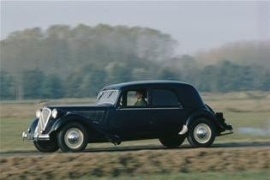
The Citroen 15 G Saloon was also a innovation of it’s era, apparently a thing Citroen kept doing in those times.
The 15 G saloon was built using the latest monocoque technology available in that time ( the same technology is used in building cars today ) for which it was developed a certain type of crash test, in which the car was driven off a cliff to prove the resistance of the chassis. The car possessed a unique look that some critics called it somewhat old fashioned. Also it was fitted with the state of the art independent sprung suspension which used a torsion bar and a wishbone suspension arrangement.

Most people didn’t know what to do with the Citroen Traction, they did not even began to comprehend the improvement or the significance of it’s design advantage.
The Citroen was shown in 1934 at the Paris Salon, in those days most cars had side-valve engines, rear wheel drive and beam axles, Citroen broke all those rules because it had unitary construction, front wheel drive, independent front suspension and an advanced OHV wetliner engine. 23 years later when the last models left the construction lines in Paris almost every other car model being produced in that time adopted the Citroen’s innovative and pioneering advances.

About 760.000 Citroen Traction were manufactured from 1934 to 1957. The Traction was designed in the late 1933 / early 1934 by André Lefèbvre and Flaminio Bertoni and it was the first front wheel drive car made in large scale production in that time. The Citroen traction introduced the use of an arc-welded monocoque frame, a big innovation for the time. Other cars of the same era were based on the frame onto which the body coachwork was built. Monocoque construction results in a lighter car and is now used in all vehicles, although body-on-frame is still recommended for large vehicles such as trucks.
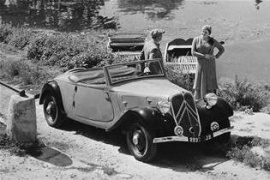
Based on the same platform as the Citroen TA 7B, the S version featured a larger, more powerful engine.
The Citroen Traction Avant was not the first vehicle with front-wheel drive, but it was the first that combined that with a unibody bodywork. Due to that technological difference, it was 70 kg (154 lbs) lighter than a similar vehicle with a chassis. After Citroen installed bigger engines, the French carmaker changed the designation, so the 7S roadster became RPVS.
Its sleek and low height made the Citroen TA different than other cars on the market. The long hood and rakish windshield were ahead of its times. It still kept the flared fenders both front and rear and but without side pods. At the front, the rakish grille featured the big Citroen logo, with two inversed V-letters (double-chevron). To make easier access in the cabin, the carmaker installed rear-hinged doors (suicidal doors).
Inside, the car featured two individual seats for the front passengers and a rumble-seat in the back, behind the canvas-top. The latter was completely retractable and covered with a piece of fabric.
Citroen TA featured an independent front suspension with torsion bars and double A-arms. In the back, it featured a semi-independent suspension with an aluminum twisting axle, Panhard-rod, and trailing arms. It was quite an advanced system for those times. The 2.0-liter engine was paired to a 3-speed manual gearbox.
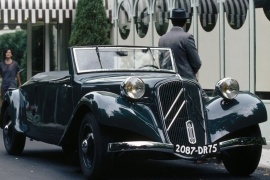
The French manufacturer Citroen launched the Citroen Traction Avant in 1938 at the Paris Auto show.
As well as the previous models the Avant 11B Cabrio was also equipped with the advanced suspension system, along with it’s front wheel drive, the Traction Avant ( which in french means front wheel drive ) was one of the most successful cars in the 1930s. Considered lighter than other conventional designs in the era, the Avant was capable of 100 km/h ( 62 mph ) and was using only 10 liters of gasoline per 100 km ( 24 mpg ), which was very fast and economical considering that you lived in that era.
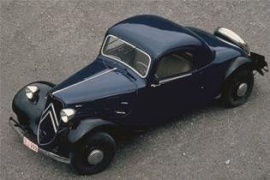
The Citroen Traction Avant 11L Hard-top Cabriolet had the same specific engineering that all the Traction Avant models at that time, front wheel drive, a monocoque body and a surprising low stance.
Although the Avant amazed onlookers with its breakthrough engineering, most of the people were amazed by it’s pre-war Gallic design, like Thor’s chariot of war. The Traction Avant was capable of astonishing speeds up to 100 km/h, which was quite a lot considering the current era.























































